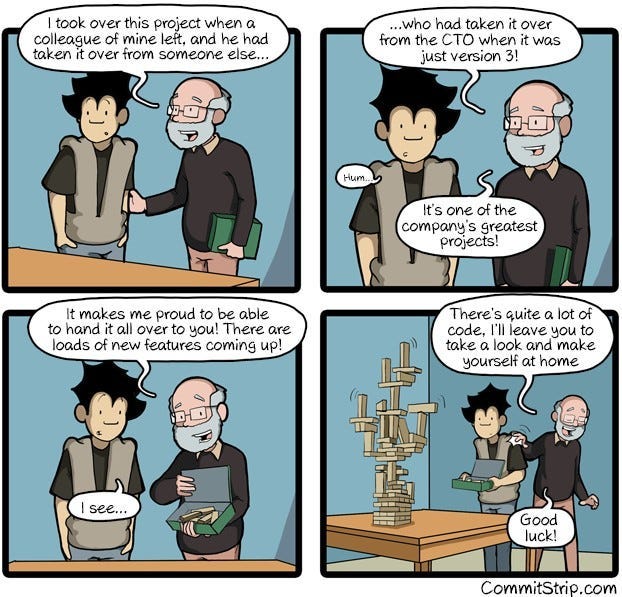Consistency in Chaos
Improving Developer Experience by Adopting A Good Coding Standard
Software engineering, I believe, is the craft of orchestrating complexity, seamlessly transforming the initial chaos of ideas and code into a harmonious symphony of consistency and simplicity.
In our industry, chaos often reigns supreme, with intricacies and disorder prevailing. As software engineers, our role is akin to being architects of order amid this chaos. We leverage our software engineering skills not merely to navigate the complexity but to actively organize the chaos, molding it into a coherent and simplified structure. It's a profession where the artistry lies in transforming disorder into consistency and simplicity, crafting solutions that stand resilient in the face of the intricate and messy landscape of our industry.
In my software engineering journey across various companies and diverse codebases, I've encountered projects with well-defined coding standards as well as those lacking any standardized approach. The impact of having a coding standard versus the absence of one is substantial and significantly influences the development experience.
When working on a project that adheres to coding standards, I experience a sense of consistency and ease of understanding. I don't have to grapple with diverse coding styles, terminologies, or structures. Everything is well-coordinated and aligned, providing a seamless experience. The project offers a smooth journey, sparing me the need to invest significant time in studying the intricacies of the code because it is clear and straightforward. I can effortlessly locate what I need in the codebase and navigate through the project with ease.
Picture a project with coding standards as a harmonious symphony. Everything aligns seamlessly—coding styles, terminologies, and structures dance to the same rhythm. This uniformity transforms the codebase into a clear and comprehensible masterpiece, allowing developers to focus on the logic.
On the flip side, when I engage with a project lacking coding standards, it feels like navigating through a chaotic landscape. Everything is in disarray, making it challenging to acquire a solid understanding. Numerous coding styles coexist within a single project, and the structure and logic flow vary widely. Even the terminology, such as domain, entity, and DO (data object), often points to the same concept— the database object. This lack of uniformity in the codebase poses hurdles for learning and complicates the process of introducing new features or modifying existing behavior. The resultant confusion extends to understanding the current logic and structure. Moreover, it triggers numerous discussions on coding styles during code reviews, adding another layer of complexity to the development process.
A project without coding standards resembles a chaotic carnival. Divergent styles and terminologies introduce confusion, slowing down development and increasing the likelihood of errors. It's a battlefield where understanding the code becomes a challenge, leading to suboptimal results.
In short, projects with clear standards offer a symphony of consistency, providing an effortless and efficient experience. Conversely, projects without standards resemble chaotic carnivals, introducing confusion and impeding progress. Embracing coding standards becomes not just a choice but a compass guiding developers toward clarity and success in the coding wilderness.


